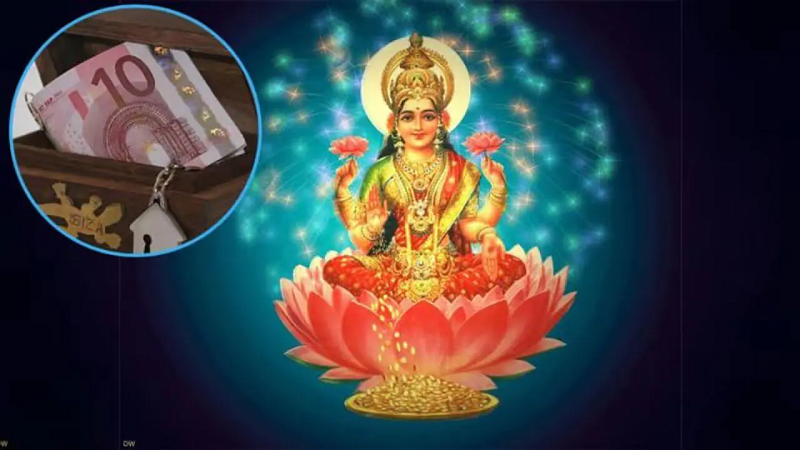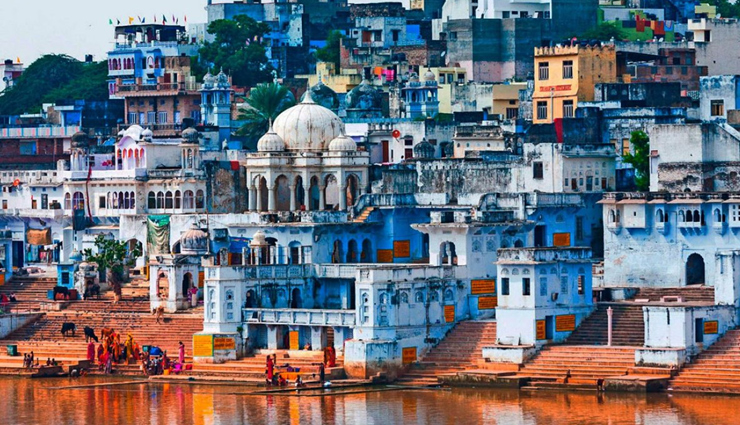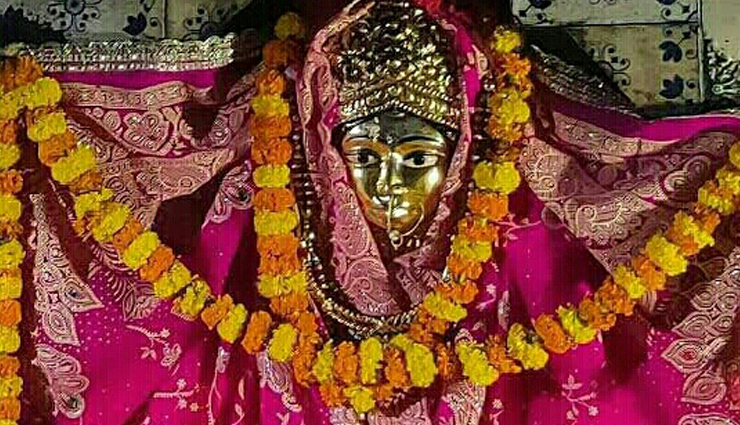From the point of view of tourism, it would not be wrong to say that India is a mysterious country. Millions of Indian and foreign tourists come every year to visit hundreds of beautiful monuments, caves, and temples in India. Then it doesn't even matter to them how much money is going to be spent to see these monuments. There are more than 100 monuments in India, where entry fees are charged by tourists. If the tourists are foreigners, they are charged two to three times more money. The tourism sector of India is benefiting from this. Tourists coming from India and abroad come with families or groups. In such a situation, a substantial amount of money is earned for the monuments. If seen, the Government of India gets a very good revenue from the money collected as entry fees. So come, we are telling you about those monuments out of these 100, which earn the most money from tourism.

Taj Mahal
The Taj Mahal, made of beautiful marble stones on the banks of the Yamuna river in Agra city of Uttar Pradesh, has made its own identity in the whole world. It is more famous than the tomb of Mumtaz. The monument took 22 years to complete and is the most visited monument in India. Not only Indian tourists but foreign tourists also come here a lot. The monument Taj Mahal is the biggest source of income among all tourist places in India. According to the report of the Ministry of Tourism and Culture, the Central Government has the protection of 116 monuments present in the country, for which an entry fee has to be paid.
Red Fort
Delhi, the capital of the country, is famous all over the world because of its historical buildings. In 1638, Shah Jahan, the then-Mughal ruler of India, built the Red Fort to protect himself from enemies. The fort remained invincible for many years until it was captured by the British and Sikh forces. It is now a UNESCO World Heritage Site. Red Fort was never known by this name before. It was originally known as "Qila-e-Mubarak". It is mentioned in many places in history that Shah Jahan got this fort constructed when he decided to shift his capital from Agra to Delhi. At that time the name of the fort was Qila-e-Mubarak after which its name was changed to Red Fort. It is also said that it was constructed with red stone and bricks, hence the British named it Red Fort, and the local people used to call it Red Fort. It took 10 years to build the Red Fort, which means the construction of this fort was completed after a decade. Ustad Hamid and Ustad Ahmad, the leading architects of Shah Jahan's time, started its construction in 1638 and finally completed it in the year 1648. Tourists from all over the world come to see this fort located in Chandni Chowk.

Qutub Minar
Qutub Minar is the tallest brick minaret in the world, located in the Mehrauli part of the city of South Delhi in India. It is a famous sightseeing place in Delhi. It is said that Qutb-ud-din Aibak, the founder of the Delhi Sultanate, started its construction in the 13th century. Qutub Minar has also been included in the list of India's oldest world heritage sites by UNESCO. Qutub Minar is the largest brick wall in the world with a height of 72.5 meters and a diameter of 14.32 meters. After the Fateh Burj of Mohali, the name Qutub Minar comes from the largest tower in India. The complex surrounding the Qutub Minar is the Qutub Complex, which is also a UNESCO World Heritage Site. There are a total of 379 stairs inside the tower, which are built in a circle. Qutub-ud-din Aibak, the founder of the Delhi Sultanate, started the construction of Qutub Minar in 1200 AD. After this, in 1220, Aibak's successor and grandson Iltumish built three more floors in this tower. After this, in 1369, the topmost floor completely collapsed due to lightning. After this Firoz Shah Tughlaq once again started the construction of Qutub Minar and he kept on building 2 new stories every year. He made these floors with marble and red stone. The construction of Qutub Minar was started by Aibak and completed by Iltutmish and in 1369 Firoz Shah Tughlaq got the tower repaired after it was broken due to an accident.
Humayun's Tomb - Humayun Tomb
A beautiful example of Mughal architecture in India, Humayun's Tomb in Delhi, was built in the 16th century and attracts millions of national and international tourists every year. This mausoleum was built to keep the body of Emperor Humayun safe. Built on the orders of Hamida Banu Begum, the architecture of Humayun's Tomb is similar to that of the Taj Mahal. But contrary to popular belief, Humayun's Tomb was not built by Humayun but by his wife Hamida Banu Begum as a sign of love for her husband. Humayun's Tomb, also known as 'The Hostel of the Mughals' is believed that there are not one or two but 100 tombs inside a single complex. Due to the absence of any inscriptions on Humayun's tombs, it is a bit difficult to identify whose tomb it is. The tomb of the Mughal emperor Humayun is located inside the central mortuary of the mausoleum and is surrounded by adjoining rooms containing the tombs of his two wives and later Mughals. The interiors of Humayun's Tomb are made of rich and elegant carpets and shamianas which give a grand and royal look to the monument. Inside the monument, there is a small tent on the top, where you can see Humayun's sword, shoes, and turban as a symbol of his memory. Interestingly, Humayun's Tomb introduced the concept of the four-quarter garden in Mughal architecture. There is also a garden with a building here. Where tourists can spend time in the sun in winter. Many people come here in the evening to have a picnic and also click photos.
Agra Fort
Agra Fort As the name suggests, Agra Fort is a UNESCO World Heritage Site located in Uttar Pradesh. It is about 2.5 kilometers away from the Taj Mahal, one of the seven wonders of the world. The present-day structure was built by the Mughals, although it is said to have stood here since the 11th century under the name "Badalgarh". Agra Fort was the site of a battle during the Indian Rebellion of 1857. Not as famous as it is, but any tourist who comes to Agra does not leave without seeing the fort. Earlier it was a brick fort owned by a dynasty of Rajput kings, but later it was taken over by the Mughals. It was rebuilt on the lines of Mughal architecture. Soon after, Emperor Akbar shifted his capital to Agra and used the Agra Fort as his residence. It is a very impressive monument, which has greatly benefited the tourism sector. Happens. The ticket price is different for everyone in Agra Fort. If you are an Indian citizen, then a ticket has been fixed for you at ₹ 35. Whereas for foreign travelers, its price has been kept at ₹ 550. For information For this, know that there is no ticket for children below 15 years of age.
Fatehpur Sikri
Fatehpur Sikri, near Agra, is a royal city built in the 16th century. The city embodies the ideals and heritage of the Mughal Empire. It was built by the Mughal emperor Akbar in 1571. It is believed that during the rule of the Shunga dynasty and later Sikarwar Rajputs in the 12th century, many small and various monuments and forts were built here, which Akbar got demolished while building Fatehpur Sikri. The name Fatehpur Sikri is of Arabic origin, Fateh meaning 'victory' and Sikri meaning 'giving thanks to God.' The old name of the city, Fatehabad, was given by Emperor Akbar, which means 'City of Victory'. On the second birthday of his son Jahangir, he started the construction of a royal palace, which included the names Fatehabad and Sikripur. That's why it became Fatehpur Sikri from Fatehabad.










